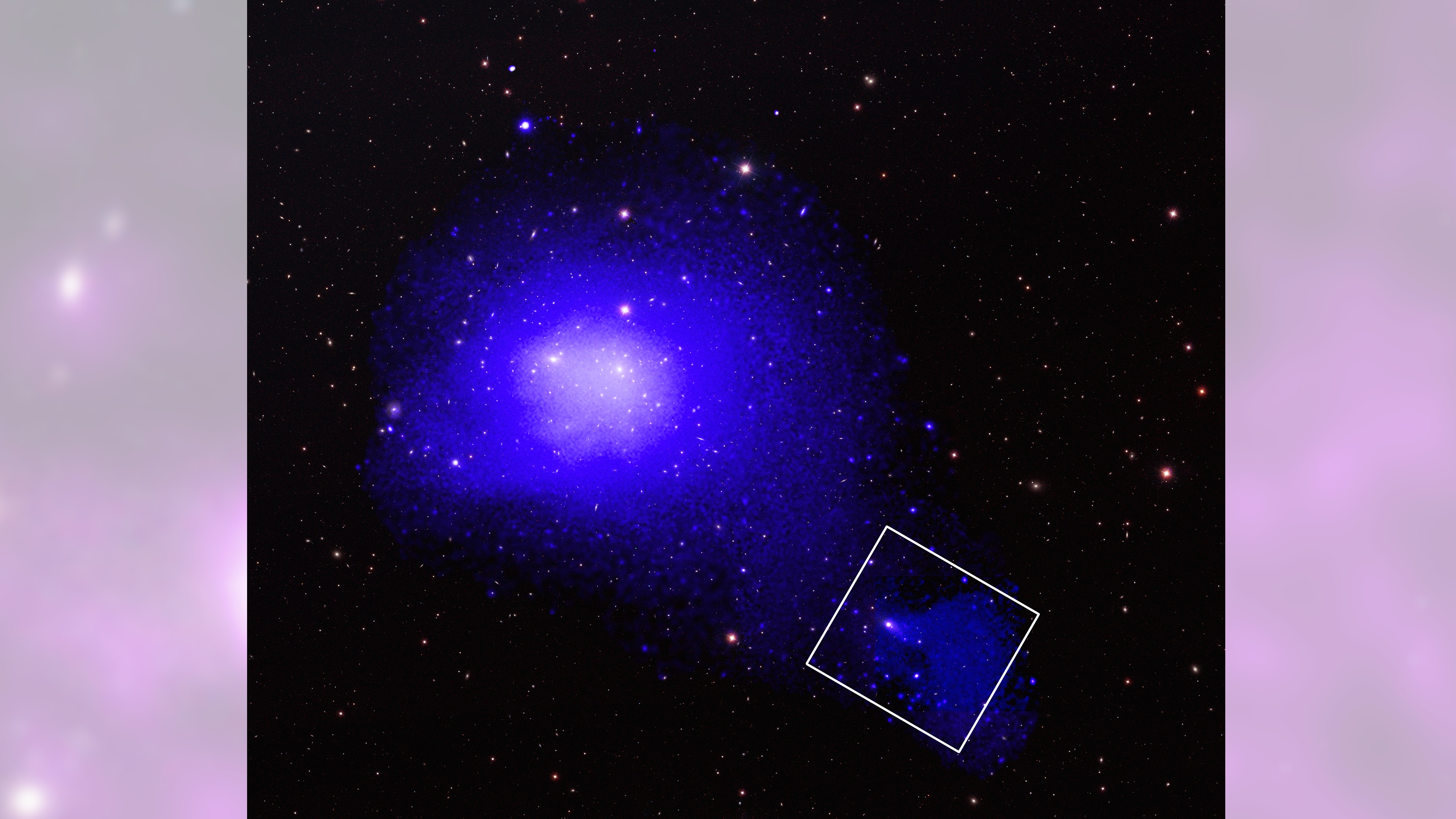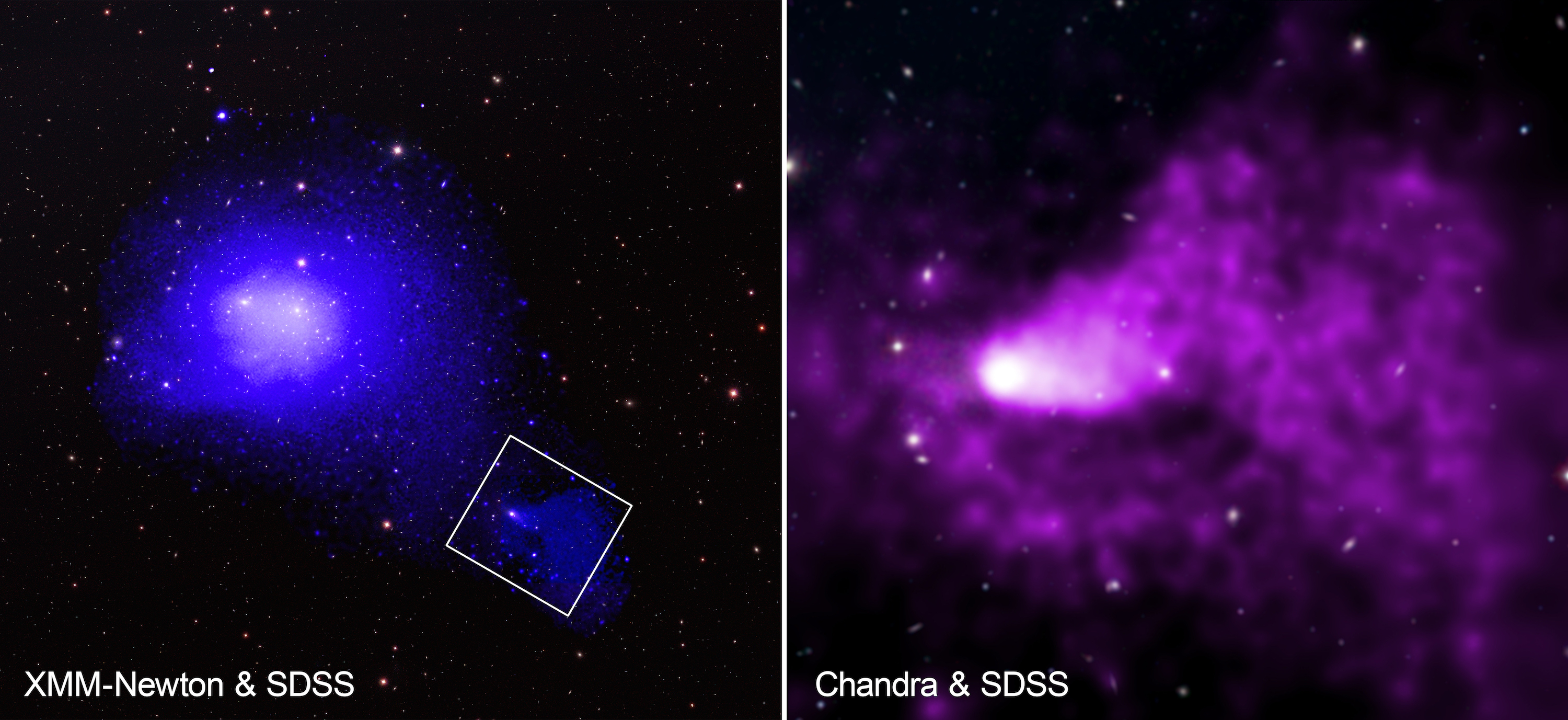
Like comets and cats, clusters of galaxies sometimes have long tails. Recently, astronomers have found that those tails can span staggering distances, with one newly discovered tail stretching more than a million light-years long — or longer than 10 Milky Way galaxies lined up side to side.
The discovery began when a team of scientists pointed NASA's Chandra X-ray Observatory at a cluster of galaxies — around 50 galaxies bound together by gravity — called NGC 4839. This group is merging with the much larger Coma Cluster, a dense stellar formation some 340 million light-years from Earth, which contains over 1,000 tightly-bunched galaxies.
Related: Largest galaxy ever discovered baffles scientists
Researchers tracked NGC 4839 as it moved through the Coma Cluster, leaving a streak of bright, hot gas in its wake — a "tail". Using X-ray data from Chandra, along with optical data from the Sloan Digital Sky Survey, scientists measured this trail as NGC 4839 moved like a boat slicing through water from the outer reaches of the cluster toward its center. The tail ended was 1.5 million light years long — the longest such structure ever observed, according to NASA.

Using this data, the research team calculated NGC 4839's speed. They found that the runaway galaxy group is traveling at approximately 3 million mph (4.8 million km/h). Its trail showed a mild amount of turbulence, indicating that the galaxy group is not conducting a lot of heat. And at some point in its travels, it released an enormous shock wave.
Currently, the gas in NGC 4839's tail is burning especially bright, giving astronomers a rare opportunity to study it in more detail and learn more about the mechanics of how galaxy clusters merge. As it mixes with cooler gasses in the cluster, the tail will gradually disperse. Eventually the gas will become too faint to see, and NGC 4839 will be completely engulfed in the Coma Cluster. A similar fate awaits our own Milky Way, which is expected to collide with the nearby Andromeda galaxy about 4.5 billion years from now.
A paper describing the results is set to publish in the June issue of the Monthly Notices of the Royal Astronomical Society. A preprint of the study is currently available on arXiv.org.







